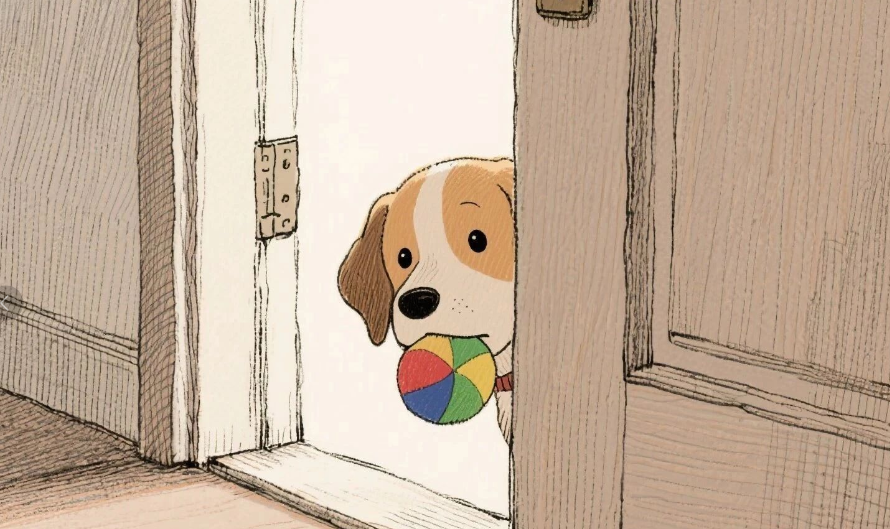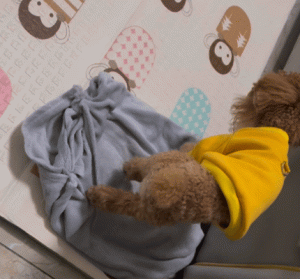-
Body Language Withdrawal
Curling up: Frequently curls into a tight ball, especially in new environments or when strangers or other dogs are present.Tail tucked: Tail tightly pressed between the legs, a classic sign of fear and insecurity.Ears pinned back: Ears are not relaxed or naturally drooping but pressed tightly against the head.Avoiding eye contact: Avoids direct gaze with humans or other dogs; eyes may dart away or look around nervously.Lowered posture: Walks or stands with a lowered body, head below shoulder level.Lip licking/yawning (stress-related): Frequently licks lips or yawns without physiological need (not thirsty or tired), signaling stress relief.Shivering: Slight trembling even when not cold or ill.
-
Behavioral Withdrawal and Avoidance
Hiding: Likes to hide in corners, under furniture, behind the owner’s legs, or under the bed, trying to escape potential stressors.Avoiding social interactions: When encountering strangers or other dogs, avoids curiosity or friendliness; turns away, walks around, or attempts to flee.Reluctance to go for walks: Hesitates or pulls to return home, especially in crowded areas or when other dogs are nearby.Excessive clinginess: Extremely dependent on the owner; becomes anxious when out of sight (separation anxiety can relate to low confidence), constantly seeking physical closeness for security.
-
Excessive Submissive Behavior
Rolling over and exposing belly (not play invitation): In stressful situations (e.g., owner returns, stranger approaches, another dog passes), immediately rolls over exposing the belly, sometimes with slight urination. This is not an invitation to play but a strong signal of “I am harmless, don’t hurt me.”Low body posture when approaching: Approaches humans or other dogs with body very low, almost crawling.

-
Overly Sensitive to Stimuli
Easily startled: Reacts excessively to sudden sounds (doorbell, thunder, objects falling), movements, or unfamiliar items; may jump, hide, or bark.Defensive reactions: Fear may trigger low growls, baring teeth, or even biting when cornered or feeling trapped (fear-based aggression). Insecure dogs can sometimes pose a higher risk of aggression because they perceive threats more readily.
-
Lack of Curiosity and Playfulness
Disinterest in new things/environments: Shows vigilance or avoidance rather than curiosity or exploration in new spaces or with new toys.Low play motivation: Rarely initiates play; may hesitate or show little engagement even when invited by the owner, and may quickly stop.
-
Changes in Appetite (Possible)
May avoid eating in stressful environments (multi-dog households, noisy settings) or show reduced appetite. Stress may also trigger overeating.
-
Excessive Licking (People or Self)
Licking the owner excessively: Can be a self-soothing behavior or a way to seek comfort.Excessive self-licking: Focused on specific areas (like paws) may indicate anxiety or stress-driven repetitive behaviors.
A person’s insecurity is a deep and complex psychological state, stemming from self-doubt and a sense of inadequacy. While human insecurity can often be hidden or disguised, a dog’s insecurity tends to be much more obvious. Puppies and dogs experiencing low confidence or fear can have their quality of life affected. Therefore, dog owners are encouraged to be patient, providing love, care, and support. Remember, your own emotions play a key role in shaping your dog’s behavior. Frequent scolding or physical punishment will only make your dog feel more insecure and fearful. Treat them with kindness, and you’ll help build their confidence and well-being.





